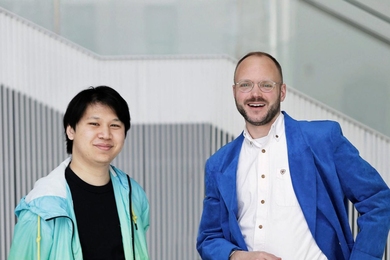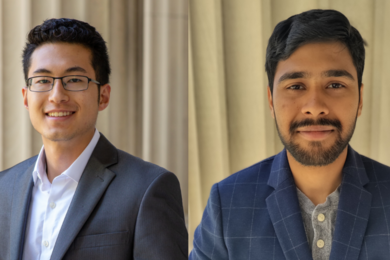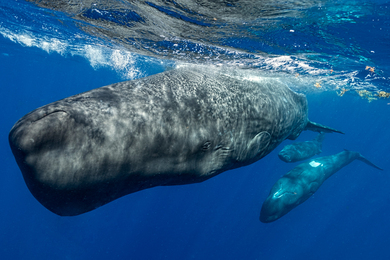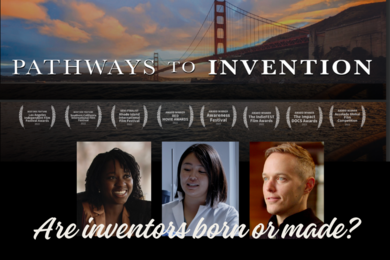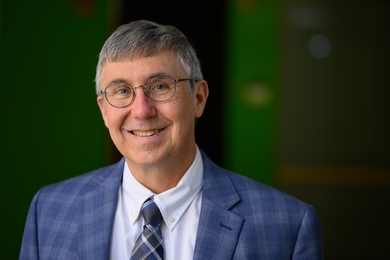Daniela Rus was a highly sought MacArthur Fellow who founded a prestigious robotics laboratory at Dartmouth College when MIT came calling. Yang Shao-Horn was doing battery research as a National Science Foundation Fellow in France.
They are among the 19 women who joined the School of Engineering faculty in the past three years. The 355 full-time faculty members in the school's eight departments and two divisions now include 50 women. Professor Thomas Magnanti, dean of engineering since 1998, has made increased diversity one of his key goals.
Shao-Horn, a graduate of the Bejing Polytechnic University, earned the Ph.D. from Michigan Tech in 1998 and was research engineer for the Eveready Battery Co. in Ohio before she was named an NSF Fellow. When MIT approached her about joining the faculty, the quality of colleagues and students made her decision easy.
"It has been challenging, exciting and rewarding," said Shao-Horn, who joined the Department of Mechanical Engineering as an assistant professor in 2002-03. "There are a lot of opportunities to strike collaborations within and across departmental boundaries. I'm very happy about my decision."
Shao-Horn, named the Atlantic Richfield Career Development Professor in October 2002, received a Young Investigator Award from the Office of Naval Research in March for research on lithium battery materials. She was the lead author of a paper published in Nature Materials last June that described the discovery of lithium atoms that could be used to develop more efficient rechargeable batteries for products ranging from laptop computers to electric cars.
The Electrochemical Energy Laboratory in the new Center for 21st Century Energy was created for Shao-Horn's advanced battery and fuel-cell research. It was dedicated on Dec. 15.
Rus, who received a $500,000 MacArthur grant in 2002, joined the MIT faculty for the fall semester as a visiting associate professor of electrical engineering and computer science after 10 years at Dartmouth. She earned the Ph.D. from Cornell in 1992, founded the Dartmouth Robotics Laboratory in 1994 and co-founded the Dartmouth Transportable Agents Laboratory the following year. She was director of the Robotics Laboratory.
Her decision to come here was driven by the fact that MIT is the "Mount Olympus of science and technology." An advocate of undergraduate research, Rus rejoined four of her former students who are doing graduate work here. "It's very rewarding to me to see that the students I once taught are now successful and happy scientists," Rus said when she accepted the MIT offer. She becomes a tenured associate professor next month.
To assist the School of Engineering's departments and divisions conduct thorough searches, Magnanti established the Office of Faculty Diversity Searches (OFDS), which identifies highly qualified women and minorities who are not in the job market and encourages them to be considered for a position.
Before approaching potential candidates, OFDS manager Irene Miller learns about their research and outside interests.
"Understanding what is meaningful for the whole person helps in successive conversations, in campus visits and the negotiation process," said Miller, who came to MIT in 1996 as a search consultant to Professor Edward Crawley, then head of the Department of Aeronautics and Astronautics. "This allows the successful candidate, newly hired, to settle in more quickly and start adding value to the community they have decided to call their own."
A version of this article appeared in MIT Tech Talk on December 17, 2003.

